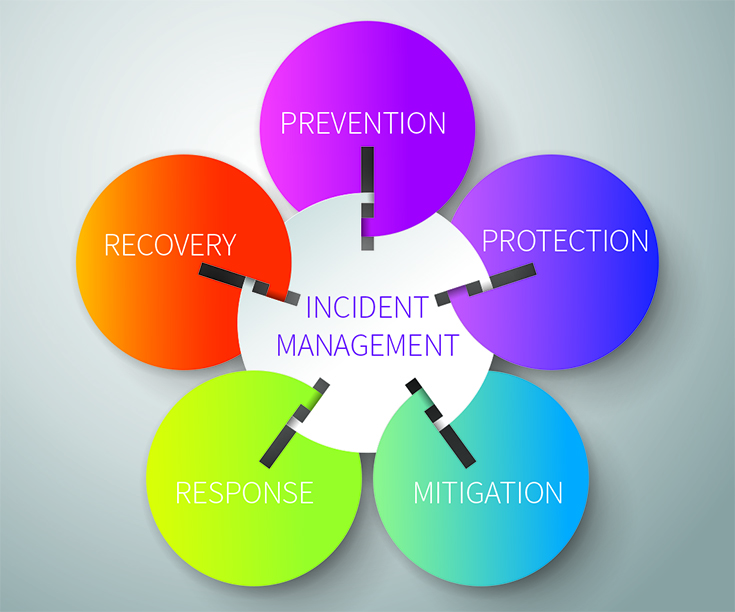US National Incident Management System – 2017 update
US National Incident Management System – 2017 update
Posted on 28th November 2017 at 16:03pm
The US NIMS update is based on experience from the unforgiving environment of real world events and uses these lessons to improve future performance. The essence of this blog is to highlight some of these points, writes Editorial Advisory Panel Member Brian Dillon

The National Incident Management System (NIMS) was first published by the US Department of Homeland Security in 2004. Its purpose is to improve interoperability by providing guidance to government, emergency services, non-governmental organisations and the private sector. It covers all incidents – regardless of cause, size, location or complexity – and is intended to be used by the entire community, not just the emergency services or government agencies. In the UK, comparable procedures can be found within the Joint Emergency Services Interoperability Programme and Civil Contingencies Act requirements.
In 13 years NIMS has only been updated twice; firstly, in 2008 and most recently in October 2017. Evidently changes are not made lightly. The latest publication was based on experience from real world events, learning from exercises and over 3,000 individual submissions. The updates straddle a range of subjects including resourcing, information management and operations centres. Although aimed at American society, the reality is that NIMS should resonate with all those concerned in crisis management and this blog focuses on some of the changes that speak to a wider audience.
The starting point is that for NIMS, incident management is about more than just a system detailing command arrangements. Indeed, an effective strategy begins long before the emergence of a critical incident and should focus on five areas: Prevention; protection; mitigation; response; and recovery. Through this lens the implicit challenge is for organisations to be outward looking; working to ensure their plans are inclusive of the interoperable partnerships that are essential in order to successfully mitigate any significant threat.
In 2017 there has been a distinct shift in terms: Command and Management has been replaced with Command and Co-ordination. Now it’s easy to fall down the nomenclature rabbit hole and examine definitions, but the principle is that management is too narrow and inadequate a descriptor. Whereas co-ordination more accurately describes the requirements and challenges of multiagency working in a major incident as it marshals diverse functions, resources, systems and communication processes into a single coherent strategy within a flexible, standardised structure. This is no mean feat for the commanders concerned.
Leading a multiagency operation is demanding and commanders have also been subject of attention with some additional guidance designed to ease their burden. The previous doctrine around Multi Agency Command (MAC) Systems has been replaced by MAC Groups. Essentially the former term was concerned with the system of operation, whereas this revision details that MAC Groups are part of the off-site incident management. They should act as a supportive policy-level body, enabling resource prioritisation and decision-making. MAC Groups typically consist of agency administrators, executives or their designees but they can also include private and third sector representatives.
Previously, personal support to commanders was described simply as Command Advisors, without an explanation as to what counsel might be provided. It is now suggested that commanders may seek to appoint advisors in relation to legal matters; medical guidance; science and technology; access and functional needs.
Although most changes are adaptations on existing material, there is an entirely new section on social media. NIMS recognises that although social media presents unique issues in major incidents, it essentially serves two purposes – the collation or dissemination of information.
Social media can be used as a means to gather first-hand accounts, monitor events or enhance situational awareness. Nevertheless, this requires careful analysis and accurate interpretation in order to avoid reaching misleading conclusions. In practice, the gathering of data isn’t necessarily a problem. The difficulty comes in sifting sometimes vast quantities of material to identify key pieces of information and, more widely, being able to understand the evolving narratives. In both cases the aim is to avoid being a passive observer, rather to respond proactively, in order to try and exert a positive influence on the situation. Certainly, the public expectation is that authorities will communicate via social media and in so doing commanders should consider these key points:
Identify their intended audiences;
Be clear on what types of information they want to share;
Decide if their purpose is purely to transmit messages or if they seek responses; and
Consider the potential time delay before survivors receive the message.
Finally, an interesting and timely new addition is the section titled survivors as resources. In numerous major incidents, those caught up in the situation are often the first people to provide life-saving assistance before the emergency services arrive. NIMS recognises that: “The natural desire to help does not disappear once responders arrive on the scene”. Consequently, contingency planning should address this and have a strategy in place as to how commanders can manage survivors and, if appropriate, use them in a safe and effective manner.
The NIMS update is based on experience from the unforgiving environment of real world events and to use these lessons to improve future performance. The essence of this blog is to highlight some of these points.
An effective response starts long before the emergence of a threat; coordination is as important as command and commanders themselves need meaningful strategic and practical support. Social media is a communication dimension that requires its own dynamic, but considered strategy and ultimately never lose sight of the people at the heart of an incident. Casualty treatment and witness engagement remain paramount but also think of the potential resource multiplier offered by willing and able survivors.
Editorial Advisory Panel Member Dr Arnold M Howitt, and co-authors, have written extensively on NIMS in Crisis Response. Further details on their articles can be found here (full articles available to subscribers only)
Brian Dillon, 28/11/2017